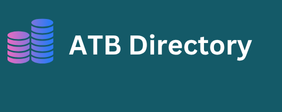Email open rate is a metric used in email marketing that measures the percentage of recipients who open a particular email message. This metric is important because it provides insight into how engaging and effective your email campaigns are. In this article, we’ll explore what email open rate is, how it’s calculated, and some strategies for improving it. What is Email Open Rate? Email open rate is the percentage of email recipients who open a particular email message. For example, if you send an email to 100 people, and 20 of them open the email, your email open rate would be 20%.
Email Open Rate Is a Useful Metric
Because it provides insight into how many people are actually engaging with your email campaigns. However, it’s important to note that email open rate doesn’t provide any information about how long the recipient spent reading the email or if they took any further action. How is Email Open Rate Calculated? Email open rate is calculated by dividing the number of emails opened by the total number of emails delivered, then multiplying by 100. The formula Israel phone number list for calculating email open rate is as follows: Email Open Rate = (Number of Emails Opened / Number of Emails Delivered) x 100 For example, if you send an email to 1,000 people, and 200 of them open the email, your email open rate would be: (200 / 1,000) x 100 = 20% It’s important to note that email open rate is not the same as email deliverability rate.
Email Deliverability Rate Measures
The percentage of emails that were successfully delivered to a recipient’s inbox, while email open rate measures. The percentage of delivered emails that were opened by the recipient. Strategies for Improving Email Open Rate Here are some strategies for improving your email open rate. Write Engaging Subject Lines. The subject line is the first thing a recipient ATB Directory sees when they receive your email. Writing an engaging subject line can increase the chances that the recipient will open your email. Some tips for writing engaging subject lines include using personalization, asking a question, and creating a sense of urgency.


